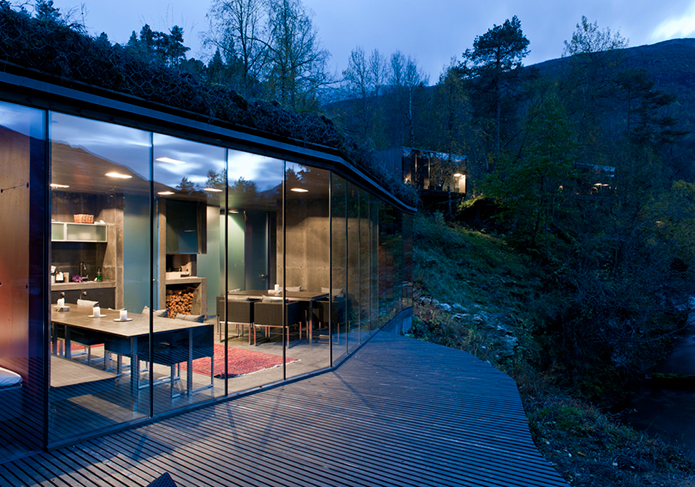
Image © Knut Bry, via Juvet Landscape Hotel.
With today’s architectural bias towards urban-centric conurbations and mass construction projects, it is not uncommon to feel a sense of weariness, discontent and frustration about architecture’s preoccupation with city-scale grandiose design statements. Architectural discourse might suggest that some architects are more concerned with status symbols and polished icons than with buildings that assume a pragmatic and useful purpose, whilst retaining an aesthetic outlook. Big is not always best. Indeed smaller architectural projects frequently offer more of an allure, particularly where they eschew the city lights and opt instead to find their home in nature.
Picture scenes of dramatic vistas and rocky outcrops, patchworks of green and yellow moss, clear blue waters and azure skies. Then imagine cleverly designed rural hideaways and waterside retreats that have been set amongst nature’s veritable pick of wares. In the following examples, you can see the striking effects of good architecture that is congruous with its natural surroundings.
Retreat on Tinos Island
This charming bolt-hole on the quaint Greek island of Tinos was at one time a stone stable. Remodelled by design savvy Greek architect, Ioannis Exarchou, it was transformed into a small holiday home.
The architect maintained the original structure; the interior walls were freshly plastered and a new concrete floor was laid. The bijou abode, built with local stone, comprises a dining nook, kitchen, bathroom and courtyard on one level.
An area in which to rest and sleep is accessed on a lower level via several steps. The result is a home effectively tailor-made for two people, that maintains its cavernous atmosphere. For the architect, the project is “part of a case study on how ruined traditional buildings can be rehabilitated.” (Source).
Inis Meáin Restaurant & Suites
Inis Meáin Restaurant & Suites is an award-winning and remote island escape. It is sited in Galway Bay, on the middle and least evolved of the three Aran Islands, twenty kilometres from Ireland’s breathtaking west coast. The island is called Inishmaan – in Irish this translates to Inis Meáin; Irish is also the island’s first language. It spans just five kilometres and has a population of approximately 160 islanders.
Inis Meáin Restaurant and Suites was established in 2007 by Marie-Thérèse and Ruairí de Blacam, and offers the visitor an enchanting island getaway. Clearly off the beaten track, it opens for six months each year, from April through to September. The restaurant and five suites were designed by acclaimed Irish architectural practice, de Blacam and Meagher Architects. Finished in hand carved local limestone, the residence echoes the characteristic slabs of horizontal stone that comprise much of Inishmaan.
Guests are furnished with an Inis Meáin Exploration Kit that includes Cube bicycles, Steiner binoculars, a fishing rod, Altadena backpack, walking sticks and beach towels. The restaurant uses many fine ingredients found and grown on Inishmaan itself, including shellfish, vegetables, salads and herbs. The island is one that offers peaceful contemplation and the ability to unwind through walking, cycling, fishing and swimming (in the revitalising and rousing Atlantic waters), amongst other activities.
Vega Cottage
Vega Cottage in Norway was designed by Swedish-based Kolman Boye Architects. The cottage is a stark dwelling sited on the island of Vega in the Norwegian archipelago just south of the Arctic Circle. In 2004, Vega and its surrounding islands (there are 6500 islands, islets and skerries) were awarded UNESCO World Heritage status, recognising the unique interaction between the eider duck (raised for its feathers) and the island population during the nesting season. (Source)
Vega Cottage sits amid a beautiful yet austere northern Norwegian landscape. Juxtaposed with an uncompromising rocky, mossy terrain, Vega cottage appears as an alluring modern dwelling, its thought-provoking form set deftly side by side with nature. And from within, the island’s sharply defined natural aspect is manifestly heightened and glorified.
The cottage’s large windows face in three directions, relaying views of the sea, the mountains and the irregular bedrock. Its prepossessing, serene interior is split in two levels, with a large open space occupying the ground floor and bedrooms on the first. The cottage is finished in linseed oil painted pine with untreated birch skirting and frames. Its minimal structure is intentionally pared down, understated and tactile.
Hardanger Retreat
Todd Saunders, a Newfoundland born and Norwegian-based architect, engages with a creative vision of buildings that test architecture’s application to natural environments. As an example, see the article ‘Bringing new life to Fogo Island’.
Saunders Architecture takes advantage of the predominance of one particular natural building material – wood. Often the material of choice for small projects in the Nordic countries and Canada, timber sources are more economic, environmentally friendly and sustainable, in addition to having a construction history that is centuries old.
As present-day production techniques improve wood’s durability, fire resistance and application, we are seeing it used more and more in contemporary building projects. With its warmth and simplicity, wood has perhaps come to represent a modest form of modernism. Hardanger Retreat in Norway’s Hardanger Fjord was designed and built by Todd Saunders and Tommie Wilhelmsen. The retreat was an experimental structure that allowed the architects to be both uncompromising and original in their design, having respect for the landscape.
Hideg House
This contemporary woodland retreat is situated on the edge of Kőszeg, an old historic town 222 km west of Budapest, Hungary. Kőszeg was granted an award in 1978 for preserving its architectural heritage (Source), making the placement of an overtly contemporary home seem at odds with its locality. Named Hideg House (Hideg-ház), this holiday retreat was designed by a young Hungarian architectural studio, Béres Architects.
The house is sited in what was once an old quarry and is cleverly placed against a craggy rock face. The frame of the house was constructed using rough sawn larch cladding, stained black. It is comprised of two sections – the main living residence and a self-contained guest suite – with both areas connected by a sheltered open terrace. The interior of the house uses larch, but compared to the outside has a vividly contrasting smooth and natural finish. An emphasis has been placed on spacious living, natural light and accentuated views. The home’s owners were centrally involved its evolution, construction and final realisation, from “cleaning the cliffs to building custom furniture.” (Source)
Attila Béres, of Béres Architects, won an EU Leonardo scholarship upon which he was able to undertake an internship in another EU country – he joined Norwegian-based architect Todd Saunders. Béres regards Saunders as a great influence and this is apparent in the overall aesthetic of Hideg House. There is that shared sense of considering form with materials, texture and tactility, and placing the ‘man-made’ within a natural terrain.
Juvet Landscape Hotel
Juvet Landscape Hotel is situated at Valldal, near the town of Åndalsnes in north western Norway. Juvet, a marriage between nature and modern architecture and design, is sited on a precipitous river bank and surrounded by trees.
Seven detached guest rooms are perched on stilts, their huge panoramic windows framing nature’s lush spectacle.
The hotel was designed by architects Jensen & Skodvin Arkitektkontor who maintained a focus on conserving the topography of the area. The result is a place where visitors are guests of nature.
Robin’s Hut and Freya’s Cabin
Robin’s Hut and Freya’s Cabin are two shelters that can be used for quiet reflection and observation.
Designed by Studio Weave in London, they sit opposite one another across Kielder Water in Northumberland, northern Europe’s largest man-made lake.
The two shelter’s form part of a fairytale that was written by the designers… “Robin wanted to live by the woods where he loves to climb trees and play with the woodland animals. He built himself a simple wooden structure that he clad in timber shingles… The cabin that Freya built for Robin is in the image of what she imagined Robin’s woodland home to be like. She chose a spot directly opposite… to give Robin the best chance of seeing her Cabin across the lake. For the walls she arranged the strongest branches from thick to thin. And for the roof she made an enchanted forest ceiling with twisted branches tickling each other… When she saw Robin rowing away, Freya cried tears of gold and wrapped the cabin in them.” You can read the entire story here (and it has a happy ending).
Forest Retreat
This forest retreat is a place of abandon, a hideaway from the world. It was designed by Uhlik Architekti for a client wishing to have a space in which they could take refuge, finding solace from a hectic city lifestyle in Prague.
The retreat is in an area where the client spent many of his childhood years. A testament to working with nature, the cabin is angled upwards, propped upon a boulder so providing a raised outlook. Built using local materials and crafts people, the cabin’s exterior has walls clad with charred wood in order to provide a protective layer.
The interior walls are lined with an engineered wood particle board known as oriented strand board. The interior space is divided into two areas, one a flat space for dining and the other a series of steps that can be used for sitting, sleeping and storage.
Examples of architecture designed to work in harmony with nature abound. These eight waterside and rural retreats represent just a handful of such aesthetic, innovative and unobtrusive structures.
Gerard McGuickin is a freelance design writer and a blogger for his online zine, Walnut Grey Design. He writes intelligently about ‘good design’ from the viewpoint of interiors, architecture, objects and lifestyle. Gerard has a specialist interest in modern contemporary and midcentury Nordic and British design.

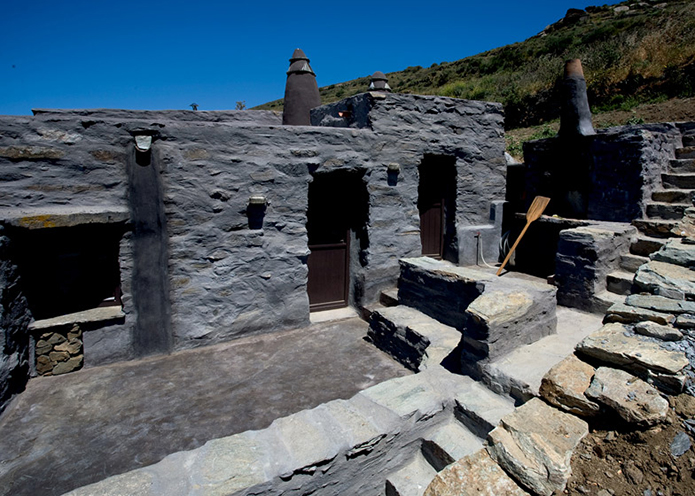
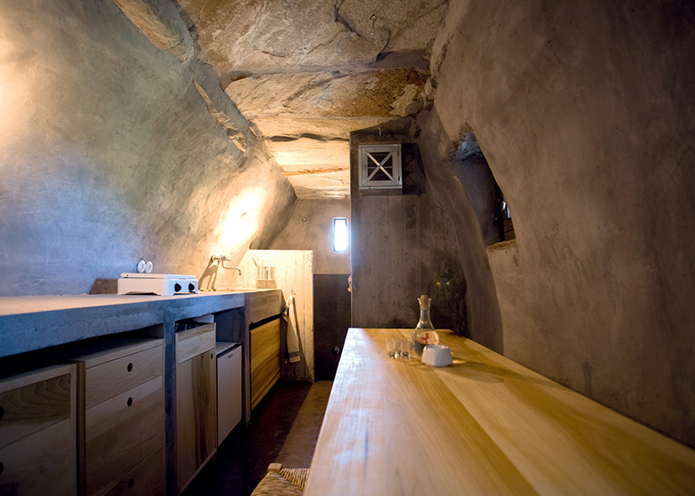
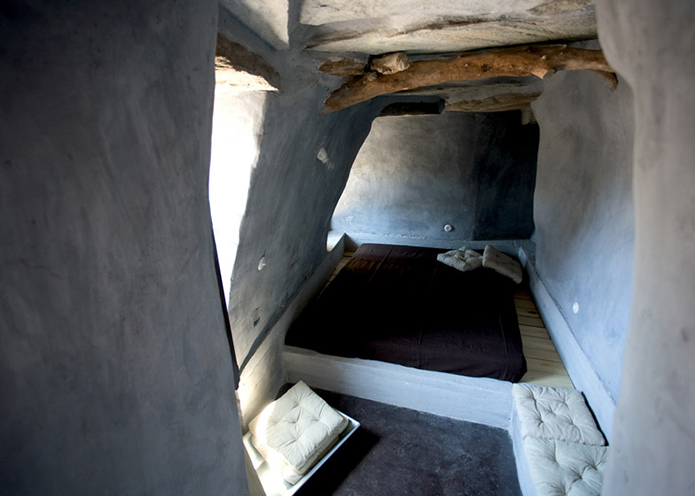
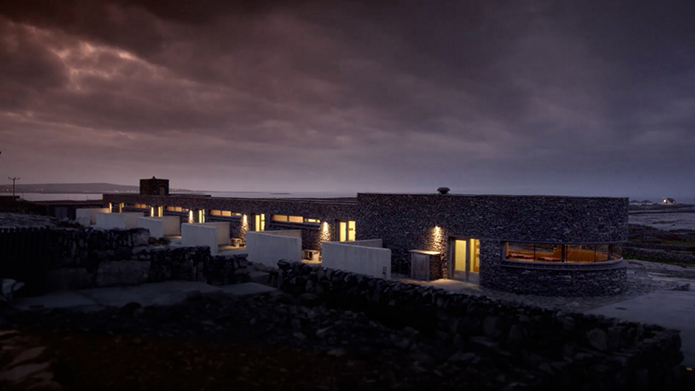
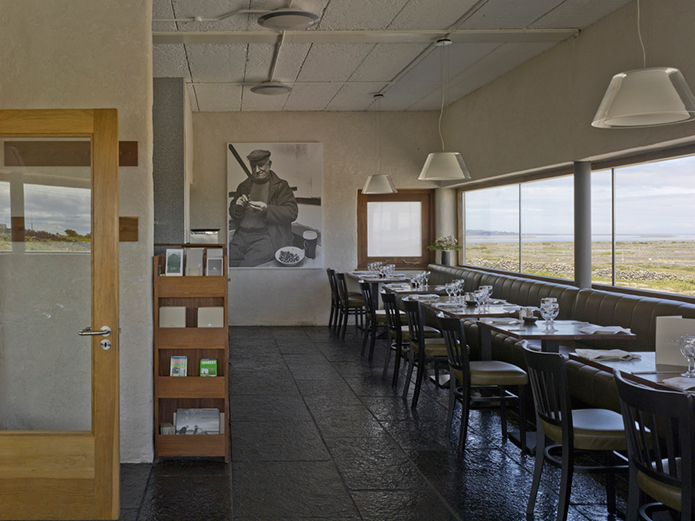
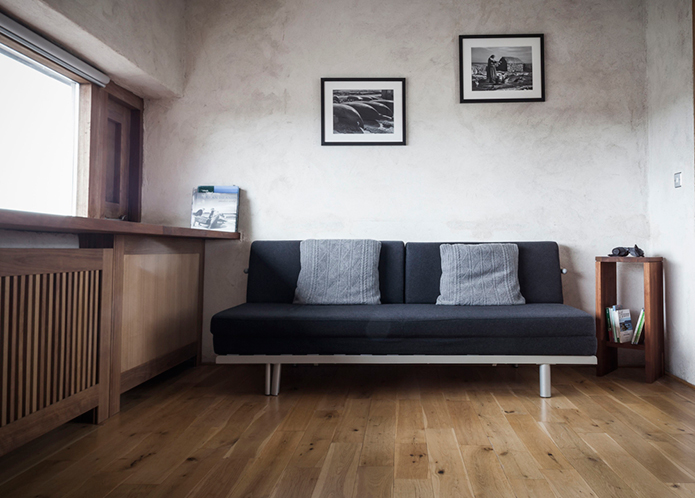
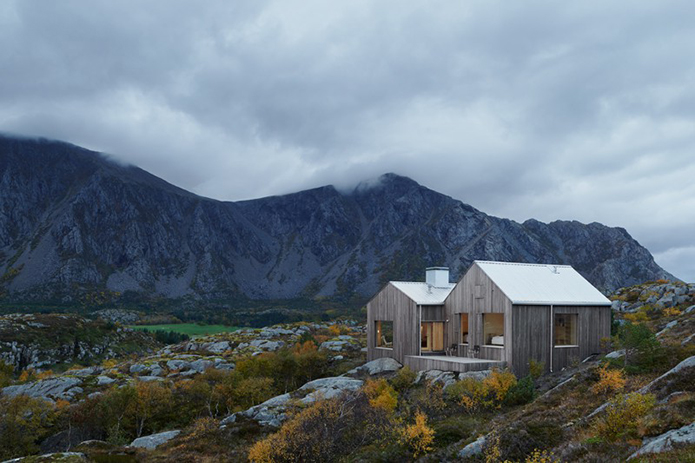
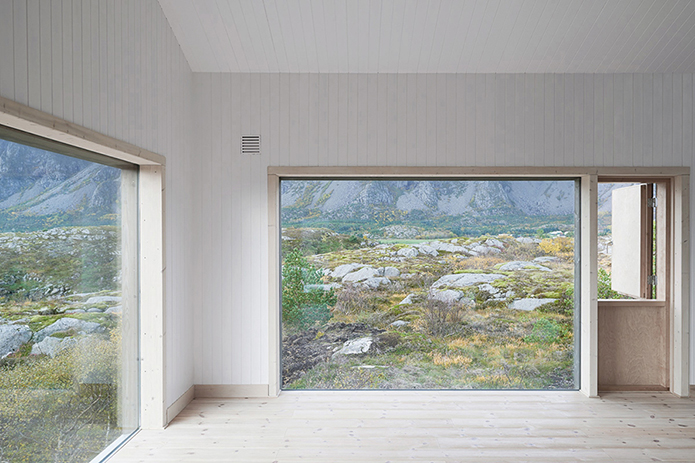
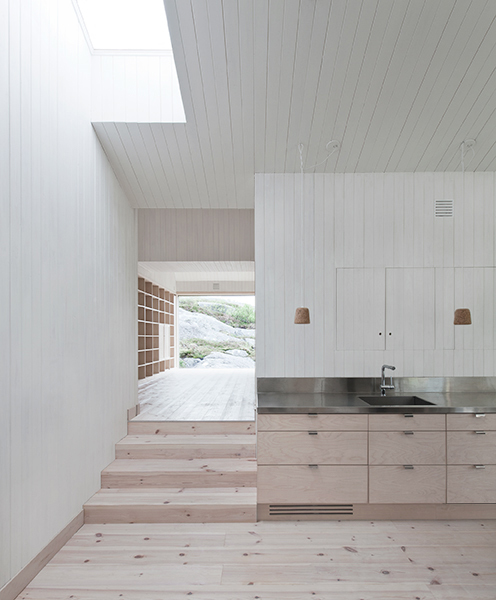

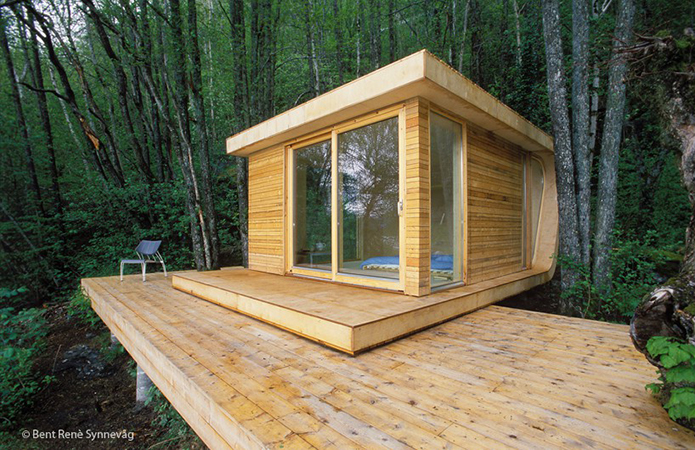
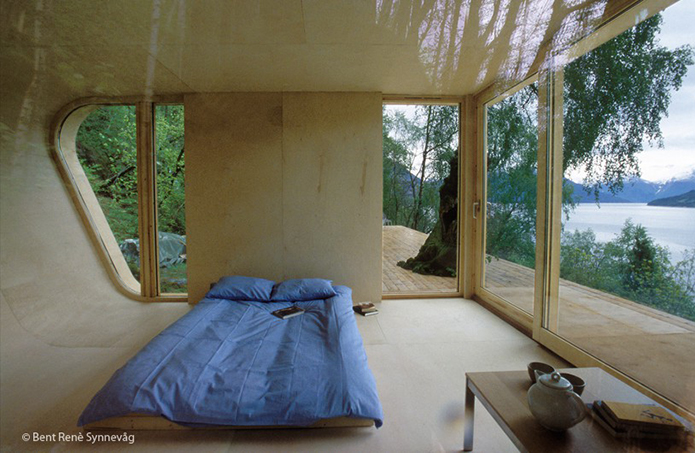
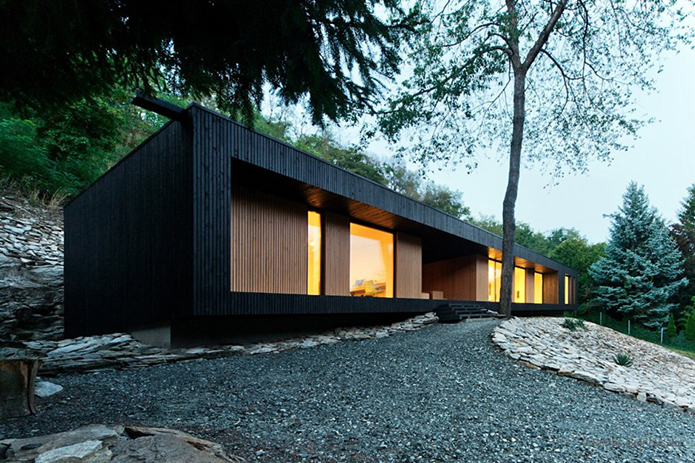
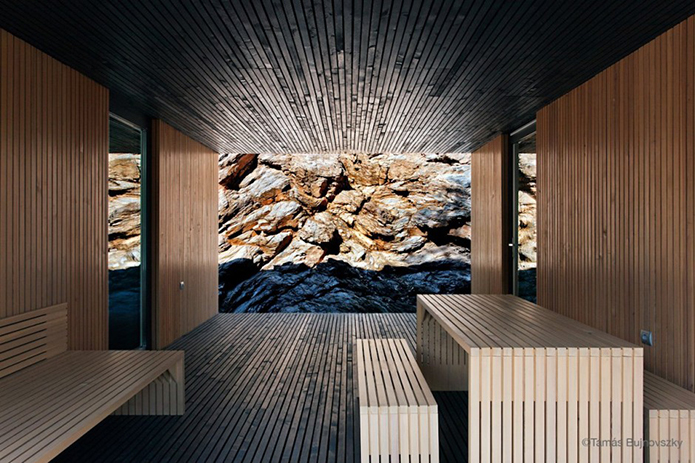
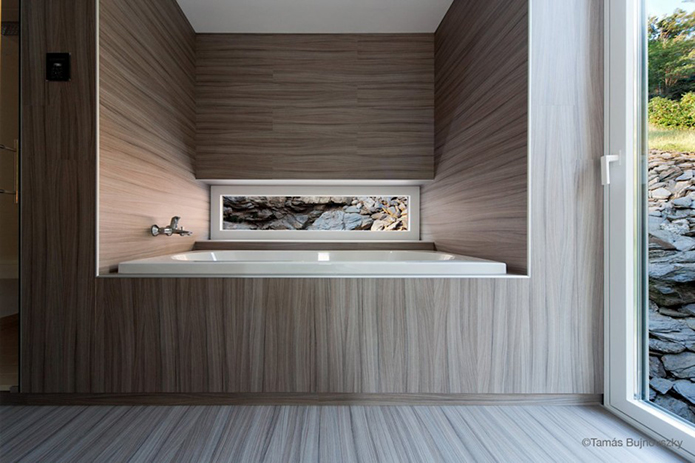
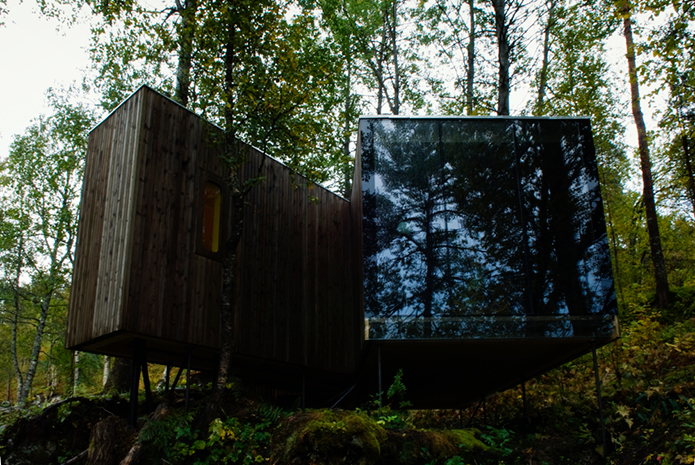
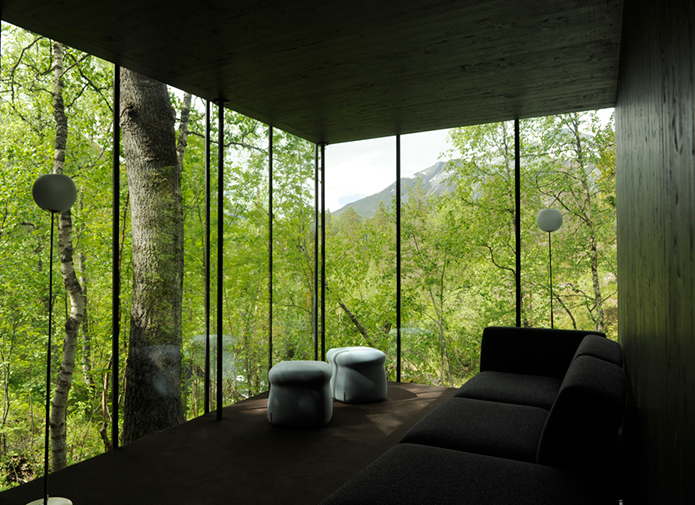
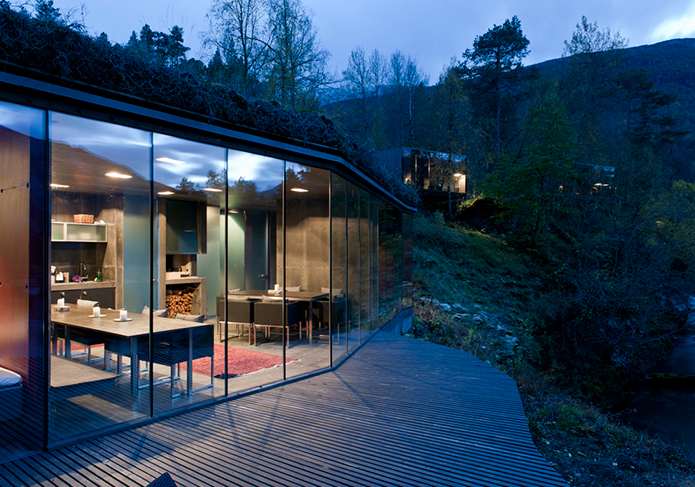
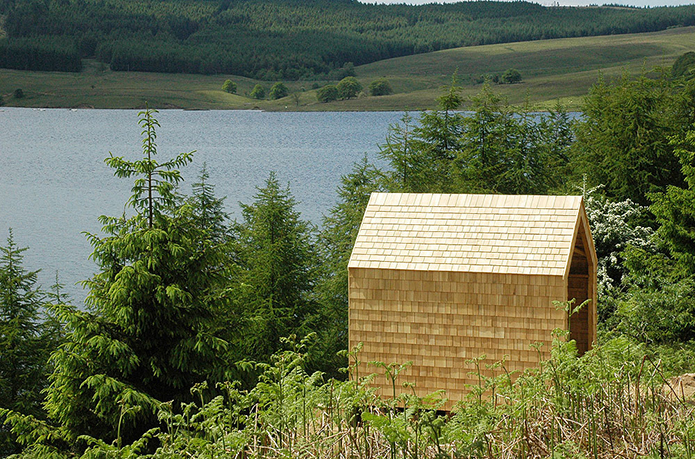
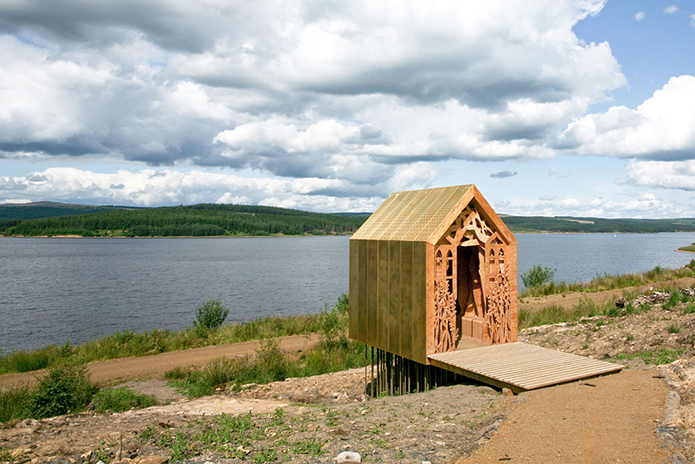
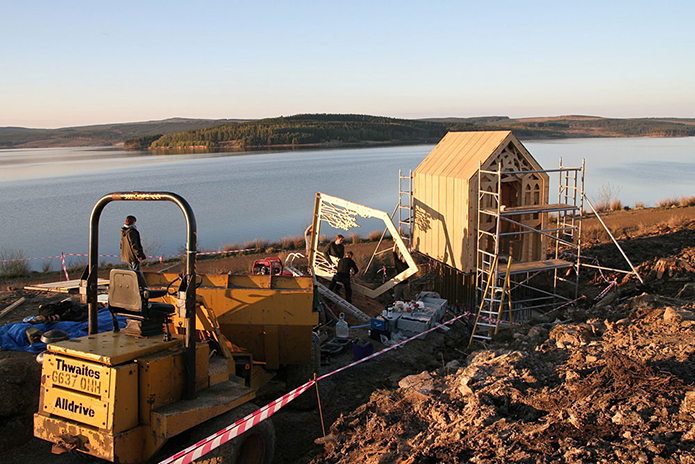
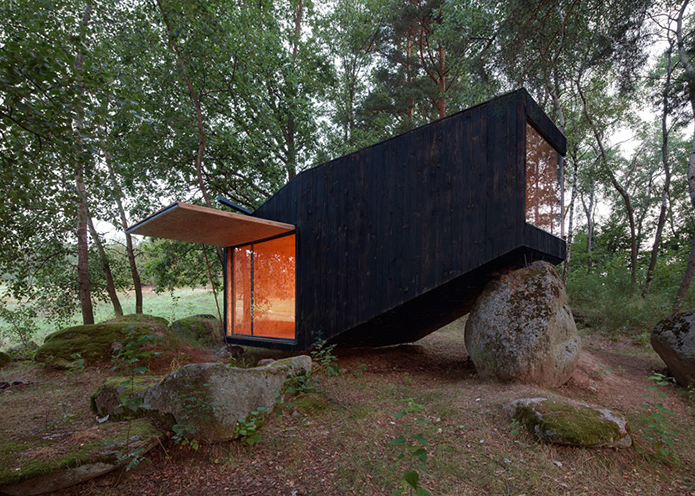
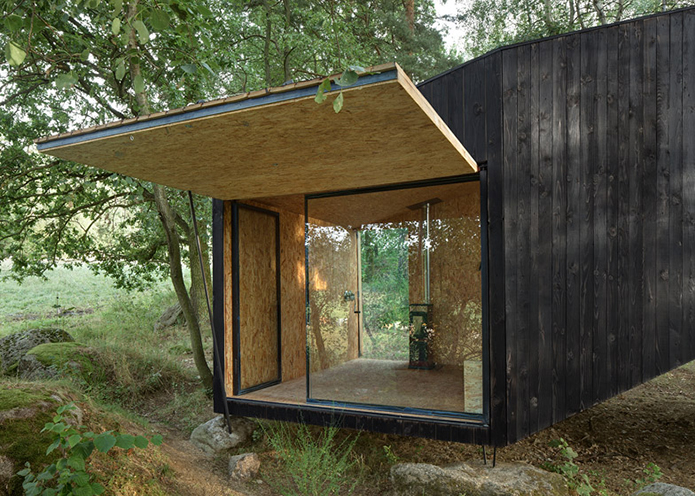
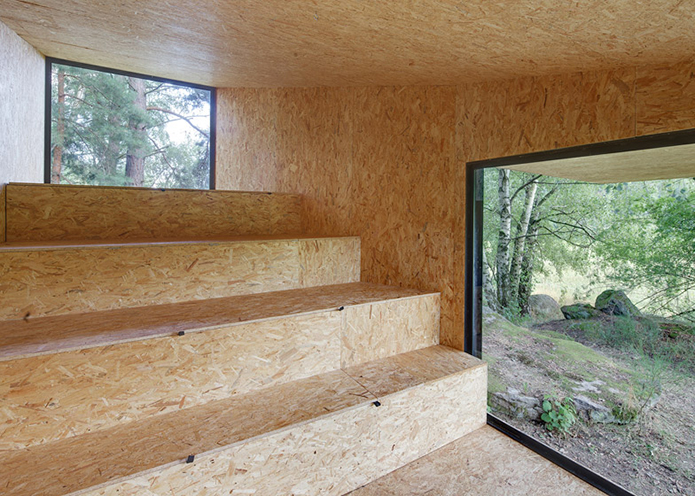









Wednesday, June 8th 2016 at 9:28 am
salomon台灣